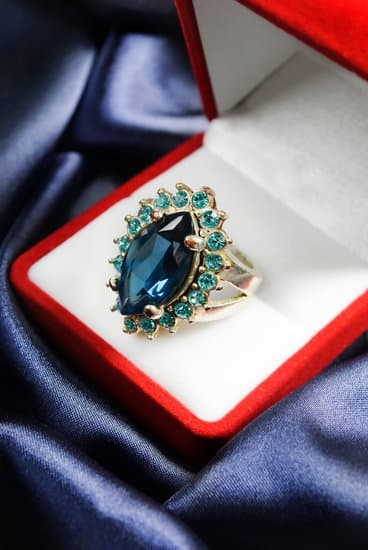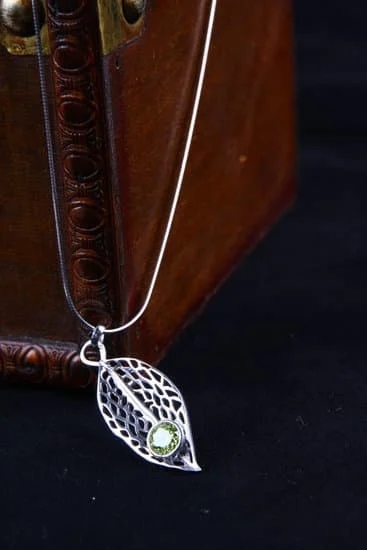Colombia is renowned for its rich culture and traditions, including the art of jewelry making. Handmade jewelry in Colombia holds a special place in the country’s heritage, with unique materials and techniques that have been passed down through generations. This article will explore the history, tradition, and cultural significance of Colombian handmade jewelry, as well as the impact it has on local communities.
The art of crafting handmade jewelry in Colombia has been ingrained in the country’s history for centuries. From intricate beadwork to stunning metalwork, Colombian artisans have mastered ancient techniques that continue to be cherished today. The use of locally sourced materials such as gold, emeralds, and seeds sets Colombian handmade jewelry apart in the global market.
In addition to delving into the history and tradition of jewelry making in Colombia, this article will also highlight some of the famous Colombian jewelry artisans and designers who have made significant contributions to the industry. It will provide insights into their unique styles and artistic inspirations that have garnered international acclaim. Furthermore, readers can expect valuable tips and recommendations for buying handmade jewelry in Colombia, ensuring an authentic and memorable shopping experience.
History and Tradition of Jewelry Making in Colombia
The history and tradition of jewelry making in Colombia dates back to pre-Columbian times, with indigenous tribes such as the Muisca and Quimbaya creating intricate and beautiful pieces using gold, emeralds, and other native materials. These ancient civilizations valued jewelry not only for its aesthetic beauty but also for its symbolic and spiritual significance. Gold, in particular, held great cultural and religious importance, and was often used in elaborate ceremonies and rituals.
The Spanish Influence
When the Spanish conquistadors arrived in Colombia in the 16th century, they were amazed by the abundance of gold and emeralds in the region. This led to a period of colonization and exploitation of these precious resources. However, it also introduced new techniques and designs to the local artisans, resulting in a fusion of indigenous styles with European influences.
Colonial Era to Present Day
During the colonial era, Colombian jewelry continued to evolve, incorporating elements of Baroque, Renaissance, and Art Nouveau styles. In more recent times, there has been a resurgence of interest in traditional Colombian craftsmanship, leading to a renaissance in handmade jewelry production. Today, artisanal jewelry makers draw inspiration from their rich cultural heritage while also embracing modern trends and innovations.
Colombian handmade jewelry continues to be revered for its exceptional craftsmanship, attention to detail, and unique designs. The tradition of jewelry making has become an integral part of Colombian culture; it represents not only a craft but a connection to the country’s history and identity. As demand for authentic handmade jewelry from Colombia grows worldwide, it is essential to recognize the legacy of these artisans and their enduring impact on the global jewelry industry.
Unique Materials and Techniques Used in Colombian Handmade Jewelry
Colombian handmade jewelry is known for its unique materials and intricate techniques that have been passed down through generations. Artisans in Colombia utilize a variety of unconventional materials to create stunning and one-of-a-kind pieces that reflect the country’s rich cultural heritage. From traditional indigenous techniques to modern innovations, Colombian handmade jewelry showcases the creativity and craftsmanship of its makers.
Some of the most common materials used in Colombian handmade jewelry include:
- Tagua nuts: Also known as vegetable ivory, tagua nuts are sustainably harvested from palm trees in Colombia. Artisans carve and dye these nuts to create colorful and lightweight beads for necklaces, bracelets, and earrings.
- Filigree silver: Colombian artisans are renowned for their mastery of filigree silverwork, an intricate metalworking technique that involves twisting and curling fine threads of silver to create delicate and ornate designs.
- Woven fibers: Natural fibers such as cotton and iraca palm are often woven into intricate patterns to make statement earrings, bracelets, and pendants. These techniques have been used by indigenous communities in Colombia for centuries.
In addition to these materials, Colombian artisans also incorporate semi-precious stones, seeds, feathers, and even recycled materials into their jewelry designs. The combination of these unique elements results in visually striking pieces that honor Colombia’s diverse cultural tapestry.
The techniques used by Colombian jewelry makers are just as varied as the materials they work with. Some artisans specialize in ancient metalworking techniques like lost-wax casting or repoussé, while others have mastered the art of weaving, knotting, or braiding fibers to create intricate patterns.
These skilled craftsmen and women draw inspiration from their surroundings, incorporating natural motifs like flora, fauna, and geometric shapes into their designs. Each piece of handmade jewelry tells a story of tradition, creativity, and ingenuity that is deeply rooted in Colombia’s rich history.
Famous Colombian Jewelry Artisans and Designers
The tradition of handmade jewelry making in Colombia has been kept alive by a number of talented artisans and designers who have gained recognition both locally and internationally. These individuals play a crucial role in preserving the heritage and cultural significance of Colombian jewelry, while also contributing to the innovation and evolution of traditional techniques.
One such renowned artisan is Mercedes Salazar, whose eponymous brand is celebrated for its colorful and exuberant designs. Salazar combines traditional Colombian artisanal techniques with contemporary aesthetics to create one-of-a-kind statement pieces that have garnered attention on runways and in fashion magazines around the world. Another notable figure in the Colombian jewelry scene is Paula Mendoza, whose stunning creations often feature bold geometric shapes inspired by pre-Columbian art and architecture.
In addition to individual artisans, there are several jewelry design collectives in Colombia that are making waves in the industry. One example is CHC Lab, a platform that brings together emerging talent in jewelry design, offering support and resources to help them launch their careers. These designers often draw inspiration from Colombia’s rich history, natural landscapes, and indigenous cultures, resulting in pieces that are both visually striking and culturally meaningful.
Cultural Significance of Handmade Jewelry in Colombia
Colombia has a rich and diverse cultural heritage, and handmade jewelry is an integral part of the country’s traditions and customs. The cultural significance of handmade jewelry in Colombia goes beyond mere adornment; it serves as a symbol of identity, history, and social status.
Symbolism and Meaning
In Colombia, handmade jewelry often carries deep symbolic meanings that are rooted in the country’s indigenous, African, and Spanish heritage. For example, many designs incorporate traditional symbols and motifs that represent fertility, protection, nature, and spirituality. These symbols hold significant cultural value for the people of Colombia, serving as a connection to their ancestors and cultural roots.
Celebrations and Rituals
Handmade jewelry also plays a vital role in Colombian celebrations and rituals. Special occasions such as weddings, religious ceremonies, and festivals often involve the exchange or wearing of intricately crafted jewelry pieces. This practice not only enhances the beauty of these events but also serves as a way to preserve age-old traditions and customs within Colombian society.
Community Identity
Furthermore, handmade jewelry in Colombia is closely tied to community identity. Different regions of the country have their own distinct styles and techniques for creating jewelry, reflecting the diversity of Colombia’s cultural landscape. Through their craftsmanship, artisans uphold these unique regional identities while contributing to the overall cultural tapestry of the nation.
As evidenced by its deeply ingrained cultural significance across various aspects of Colombian life, handmade jewelry continues to be a cherished art form that embodies the spirit and heritage of this vibrant South American nation.
Buying Handmade Jewelry in Colombia
The allure of handmade jewelry from Colombia lies in its unique designs and high-quality craftsmanship. For those visiting this vibrant country, purchasing handmade jewelry can be a memorable experience. With a rich history of jewelry making, Colombia offers a wide array of options for buyers looking to take home a special piece of art. Whether you’re exploring the streets of Bogotá or the markets in Cartagena, here are some tips and recommendations for buying handmade jewelry in Colombia.
When shopping for handmade jewelry in Colombia, it’s essential to support local artisans and ethical businesses. Look for shops and vendors that emphasize their use of traditional Colombian techniques and locally sourced materials. By doing so, you’ll not only be investing in a unique piece of jewelry but also contributing to sustainable practices within the industry. Many artisans take pride in incorporating materials such as emeralds, gold, silver, and even seeds from the Amazon rainforest into their creations.
In addition to seeking out reputable sellers, it’s important to understand the cultural significance behind the jewelry pieces you’re interested in purchasing. Many designs are influenced by indigenous traditions and carry symbolic meanings. Taking the time to learn about these cultural aspects will deepen your appreciation for the craftsmanship and heritage woven into each handmade piece.
| Tips | Recommendations |
|---|---|
| Support local artisans and ethical businesses | Incorporate locally sourced materials |
| Understand cultural significance behind jewelry | Learn about indigenous traditions and symbolic meanings |
Impact of Handmade Jewelry on Colombian Communities
Handmade jewelry in Colombia has a significant impact on the local communities, providing economic opportunities and preserving traditional craftsmanship. The production of handmade jewelry contributes to the livelihood of many artisans and their families, sustaining their cultural heritage and traditions. This section will delve into the various ways in which handmade jewelry has influenced Colombian communities.
The impact of handmade jewelry in Colombia can be seen through the positive effects on local economies. Artisans and jewelry makers often work within their communities, creating employment opportunities and contributing to the financial stability of those around them. By purchasing handmade jewelry from these communities, consumers can directly support the livelihoods of these artisans and contribute to the local economy.
Furthermore, handmade jewelry plays an essential role in preserving Colombian culture and traditions. The techniques and materials used in creating these pieces are often passed down through generations, maintaining a connection to the country’s rich history. Indigenous communities, in particular, have a strong tradition of creating unique handmade jewelry using traditional methods that have been practiced for centuries.
In addition to preserving cultural heritage, handmade jewelry also fosters a sense of community pride. Local artisans often draw inspiration from their surroundings, infusing their designs with elements that reflect their cultural identity. By promoting and celebrating these unique creations, Colombian communities are able to showcase their artistic talents and promote cultural exchange.
The Future of Colombian Handmade Jewelry
In conclusion, the future of Colombian handmade jewelry is promising, with a strong focus on embracing trends and fostering innovation. As we continue to move forward, it’s clear that traditional techniques will be merged with modern designs to create unique pieces that appeal to a global audience. The intersection of tradition and innovation within the Colombian handmade jewelry industry will keep it relevant and sought after in the years to come.
The industry will also see a growing emphasis on sustainability and ethical practices, as consumers become more conscientious about their purchases. Colombian artisans are expected to continue using locally sourced materials and environmentally friendly processes, further contributing to the appeal of handmade jewelry from Colombia.
Overall, the future of handmade jewelry in Colombia looks bright, with an increasing interest from shoppers around the world. As demand for authentic and culturally significant pieces grows, so does the opportunity for Colombian artisans to showcase their exceptional craftsmanship and preserve their rich traditions. Whether you’re drawn towards exquisite emerald jewelry or intricately woven filigree pieces, there’s no doubt that the allure of handmade jewelry from Colombia will endure for generations to come.
Frequently Asked Questions
What Jewelry Is Colombia Known For?
Colombia is known for its beautiful variety of emerald jewelry. Colombian emeralds are highly prized for their stunning green color and are often set into earrings, necklaces, rings, and bracelets.
Is Colombian Gold Jewelry Good?
Colombian gold jewelry is considered to be of very high quality. The country has a long history of gold mining and craftsmanship, leading to the production of exquisite and durable gold jewelry pieces that are sought after worldwide.
Which Country Has a Tradition of Making Jewelry?
Many countries have a tradition of making jewelry, but India is particularly renowned for its rich and diverse history of jewelry-making. Indian jewelry is often intricate and detailed, encompassing a wide range of styles and techniques that have been passed down through generations.

Welcome to my jewelry blog! My name is Sarah and I am the owner of this blog.
I love making jewelry and sharing my creations with others.
So whether you’re someone who loves wearing jewelry yourself or simply enjoys learning about it, be sure to check out my blog for insightful posts on everything related to this exciting topic!





